NEWS | SCIENCE | mining | agriculture | charity | TECHNOLOGY
P.67 ausbiz. news
P.74 saving the southern pgymy perch
P.80 sea sponges and climate science
p.84 top 10 mining innovations
P.88 robots with a human touch p.92 donate to do good p.96 the last word

70. THE MUG LIFE
It’s no secret that Australians love coffee. A growing market for Australian-grown coffee beans is brewing up unique opportunities down under.
APRIL/MaY 2024
MICROBIAL MANUFACTURING
Adelaide has been selected as the location of a multimillion-dollar manufacturing facility for microbial therapeutics.
The Australian Government Cooperative Research Centres Project (CRC-P) recently provided the biotech company BiomeBank with a $5.7 million grant to fund a manufacturing facility for microbial therapeutics. The funds will be spread out across the next three years, helping BiomeBank to establish infrastructure in Adelaide that supports the development of new microbial therapies on a commercial scale.
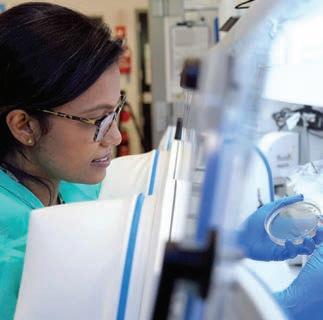
co-founder and CEO, Dr Sam Costello. Microbiome-based therapies restore healthy microbial populations in the gut, improving metabolic and nutritional processes, killing pathogens and triggering immune responses to several deadly diseases. BiomeBank will work closely with life science company Cytiva, as well as the Hudson Institute of Medical Research, during the project. According to Associate Professor Sam Forster, who leads a team of microbiologists at the Hudson Institute of Medical Research, this is an important step in establishing a broader microbial industry in Australia.
Globally, the market is predicted to reach a value of $45 billion by 2030.
“The loss of gut microbes is a significant contributor to many common diseases. We have developed a technology to produce cultured human gut microbes as therapies to treat these diseases. This grant will accelerate our efforts to scale our breakthrough microbiome therapies and meet the needs of patients globally,” says BiomeBank
Dam difficulty
“Improved understanding of the human microbiome and recent technological advances provide an opportunity to develop a new generation of therapies. We’re excited to continue our longstanding collaborative partnership with BiomeBank, which has already proven itself as a world-leader by achieving the first regulatory approval of a microbiome therapy worldwide,” he concludes.
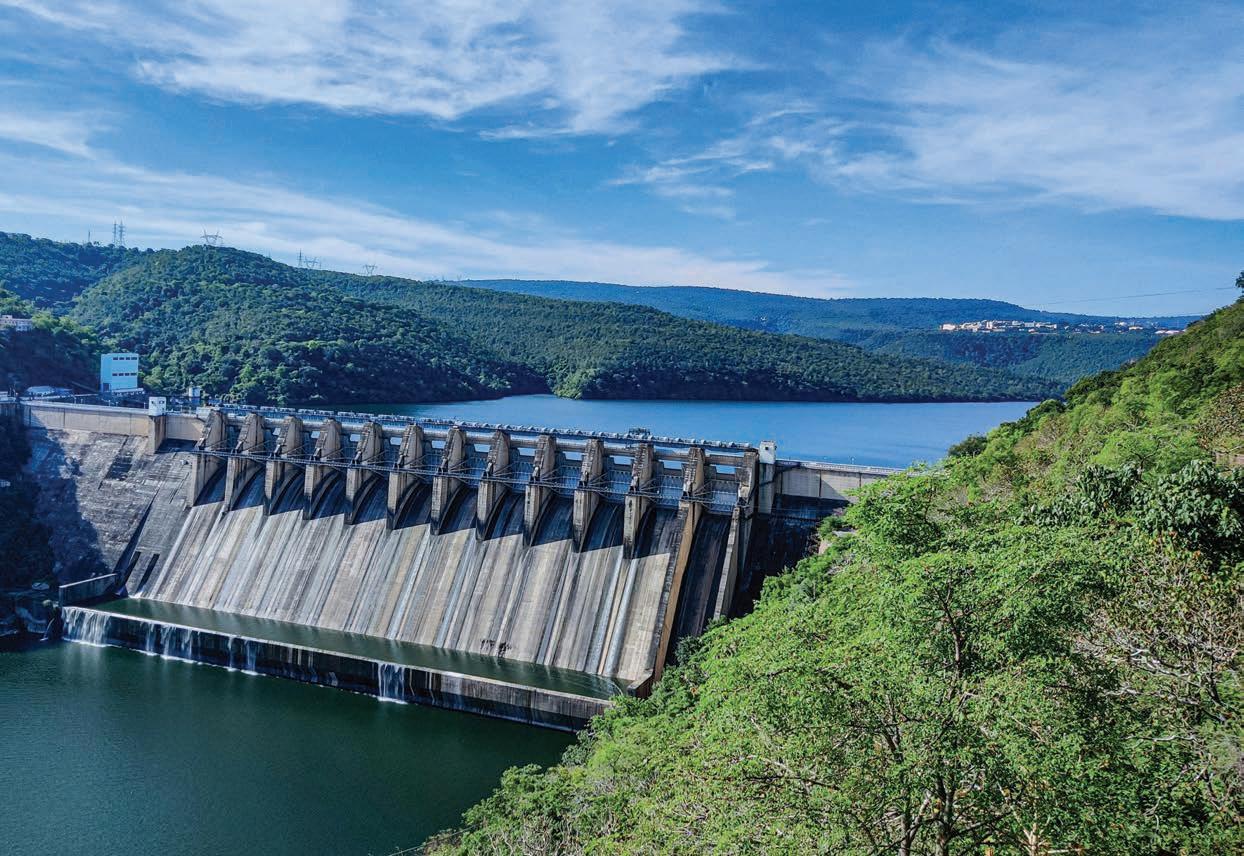
An international team of researchers is tackling the increased risks to key water infrastructure caused by climate change.
In an effort to prevent disaster, researchers from around the world have come together to examine the risk of dam failure caused by rising global temperatures.
According to the World Health Organization, 3.6 billion people currently inhabit areas highly impacted by climate change.
“We are dealing with a problem that is more and more real, but is not yet in our faces,” says Professor Ashish Sharma, Professor of Hydrology and Water Resources at UNSW’s School of Civil and Environmental Engineering. “It is acute but not yet scary. We are building solutions for a climate that will be in place in the year 2100.”
Sharma previously authored a paper focusing on the need for new risk assessments for water infrastructure as levels of maximum rainfall continue to increase. Presenting these findings, Sharma and his team were offered a $399,200 Australian Research Council grant, the only grant awarded to the field of water resources in Australia.
In particular, Sharma is concerned with the impact that climate change will have on dams.
“These dams have to be designed so they don’t fail,” he says. “But unfortunately what has been changing is not the dams but the climate.
“Our aim is to develop well thought out, clever criteria for designing and redesigning global dams so that the chances of them failing is exactly what has been calculated.
“If we have estimates of the risk, then we can be aware of the consequences of failure and make educated decisions.”
As a result of climate change, we are likely to see a 38 per cent increase in maximum global precipitation by 2100, increasing the risk of water infrastructure failure. Sharma and the rest of the international team hope to limit this risk through meticulous research and recommendations to government organisations.
AUSBIZ NEWS
62 AusBiz.
Q&A WITH ADAM BLUM, AUTHOR OF EASY TARGET

someone who is not in your immediate circle of family and friends. They can give you an objective viewpoint and help you through the tough times.

Adam Blum, author of Easy Target, met with us to discuss the importance of speaking out and advocating for your own mental health. His new book is an intimate account of his own experiences with depression, told with honesty and humour.
What inspired you to begin writing Easy Target ?
I wanted to share my story because I didn’t think I had a story to tell. Ten years ago, when I attempted suicide, my self esteem was at an all time low. But then I began surrounding myself with positive people, like my mentor Janine, who believed in me. I learnt that everyone has a story, and it’s important to share just how far you’ve come. So, really, the reason I wanted to write the book is to help people. If just one person who is struggling reads my book and realises there’s a light at the end of the tunnel, that’s enough.
What impact did bullying have on you as a child?
Twenty-five years ago, I was diagnosed with ADHD and learning difficulties. Nowadays it may not seem like a big deal since we know a lot more, but back then I was ostracised by my peers and my teachers pushed me aside in the classroom. I was told I would never amount to anything, and that affected me.
The bullying was really tough, and I didn’t have the resilience or the tools to deal with it. I was giving the bullies more ammunition, and it was a hard childhood.
But I’m not a victim. It made me who I am today, and I’m grateful for what I’ve gone through and come out the other side of.
Why do you feel it is important to talk more about men’s mental health?
In the past, men have been told that they’re weak if they speak, and that’s crap. There would be no Easy Target ; I would just be another statistic. I think we’re slowly breaking the stigma for men’s mental health, but there’s work to be done. And that’s why I’m such an advocate for men talking about mental health and sharing their feelings.
How can individuals build their sense of self-worth and inner strength? The first step is to build yourself a tribe, surround yourself with positive influences. Positivity attracts positivity, so when you’re surrounded by good people, good things happen.
Step two is acknowledging the problem and learning to advocate for yourself. No one is going to do the work for you, so you need to be the one that wants to change. You’ve got to find the inner strength to be here and turn your situation around.
I now have daily things that keep me centred as well. Exercises, healthy eating and meditation have been real game changers.
Another big one is journaling. I journal every day, and even though you might not want to put your thoughts into a book, it definitely clears your mind. It gets it out, so it’s on paper and you can let go.
Most importantly, if you’re feeling a bit off, go and see a psychologist or
How has the NSW Rural Fire Service and the True Blue Conversations podcast played a role in your life?
Being a first responder has been huge. When I was in my twenties and going through my suicide attempt, I just wanted to belong somewhere and give back. When I found the RFS, my brothers and sisters at the local brigade really helped me find my purpose and sense of belonging again. Over the years, it has helped to build my confidence and I’m now a Deputy Captain.
The best thing I ever did was start a podcast and speak to veterans and first responders to learn about why they joined the service and how they deal with adversity. By speaking to them I’ve learnt that we’ve all got challenges and we’re better for sharing them.
I’m a massive believer in sharing. My biggest goal with the podcast is just to let people know they aren’t alone. There’s always someone out there.
What do you hope readers will take away from your book? Have you received any feedback so far?
I’ve received a lot of feedback so far from people saying they appreciate how raw and vulnerable the book is, which has been great to hear. That’s why I wrote the book – so people struggling will know they’re not alone.
The one thing I hope people take away from the book is that there’s work involved in recovery. When the cards are dealt in your favour, and everyone says you’re amazing, it can feel easy to keep going. But when the cards aren’t dealt in your favour, you really need to dive deep and look at the inner you.
I also really want to emphasise that it’s not weak to speak. It’s actually a sign of strength.
INTERVIEW
READ IT ONLINE APRIL/MAY 2024 63
EMPOWERING INDUSTRIES: AUSTRALIAN POWER EQUIPMENT
In the ever-evolving landscape of power solutions, Australian Power Equipment stands out for its remarkable innovation and reliability.
Awarded a prestigious Australian Enterprise Award for 2024, Australian Power Equipment has carved out a niche for itself as a leading provider of low-, medium- and high-voltage equipment, catering to the diverse needs of industries across Australia.
This 100 per cent Australian-owned company is an authorised agent of esteemed brands such as Untel cables, B&D transformers, Leistung switchgear, WE Walters substations and CAB cable systems, offering a comprehensive suite of high-quality equipment for sale and hire.
Australian Power Equipment actively engages in the entire lifecycle of power solutions – from specification and development to delivery and commissioning. What sets the company apart is its strong emphasis on sustainability, offering repurposed and refurbished solutions, including substations, transformers and switchrooms.
A SUSTAINABLE VISION
At the heart of Australian Power Equipment’s ethos are three pillars that define its operations: safety and resourcefulness, a pathway to sustainability and community contribution. The company takes pride in its ability to think innovatively,


ensuring jobs are equipped in the safest, most cost-effective and resource-efficient manner. Here, sustainability is not just a buzzword but a fundamental commitment.
For example, Australian Power Equipment recently acquired power and earthing transformers from a rehabilitated coal mining operation. By refurbishing and repurposing this equipment, the company played a pivotal role in a new renewables project.
Australian Power Equipment also contributes to the well-being of communities through sponsorships and donations. Its passion for supporting the rehabilitation and protection of Australian native wildlife showcases a genuine commitment to making a positive impact beyond the business realm.
CRITICAL SOURCING EXPERTISE
A commitment to exceptional customer service underscores the company’s dedication to helping mining, infrastructure and renewables businesses make the best decisions for their operations.
Recent geopolitical conflicts and disruptions in international shipping have posed significant challenges for businesses globally. Australian Power Equipment, however, has strategically addressed this issue through its Critical Sourcing and In-stock solutions.
The company’s extensive network allows it to source critical equipment swiftly, ensuring that projects and sites can resume operations promptly. By repurposing stranded assets and offering refurbished and repurposed equipment, it not only addresses immediate challenges but also contributes to a sustainable cycle of equipment use and reuse.
GLOBAL GROWTH
There’s plenty more in store for Australian Power Equipment in the future. Its growth is not just confined to Australia alone, as the company expands its footprint in Europe and India, demonstrating its global relevance and impact.
Moreover, its commitment to second-hand repurposed equipment fosters a circular economy that reduces manufacturing requirements and shipping impacts.
With a steadfast commitment to excellence, sustainability and community stewardship, Australian Power Equipment continues to empower industries and contribute to a thriving environmental, social and economic future.
SPECIAL FEATURE
READ IT ONLINE 64 AusBiz.
ABOVE AND BELOW: MINING CABLES; AUSTRALIAN POWER EQUIPMENT FOUNDERS ANDREW COCKBAIN AND ABBY CRAWFORD. IMAGES: SUPPLIED.

GET OFF THE BEATEN TRACK AND EXPLORE THE REAL AUSTRALIA REX.TRULYAUS.COM An online travel hub dedicated to Australian people, places and products @trulyaus @trulyaus DESTINATIONS HOTELS & RESTAURANTS EXPERIENCES INDIGENOUS AUS AUSSIE DOGS TRULYAUS PODCAST
GOLD AND BITCOIN SURGE: WHAT’S DRIVING THE ‘INFLATION HEDGES’ TO FRESH NEW HIGHS?
words: Charu Chanana and Ole S. Hansen

At the beginning of the year, Saxo spoke in the pages of AusBiz. about 2024 becoming the year of the metals. So far, we’re seeing one metal in particular on the move, and it’s defying the odds a little.
Gold has reached record closing highs, trading well above USD 2000 an ounce despite rising bond yields and an appreciating USD – two financial drivers that don’t typically have a positive impact on the gold price. So, something else is going on.
Saxo believes that “something else” is retail investor demand for gold remaining strong, especially in Asia, as well as continued central bank gold buying in record quantities (in part to reduce exposure to the USD). The rally has also been driven by underinvested hedge funds forced back into the market as key resistance levels were broken, and a reduction in the short-selling appetite for gold due to global geopolitical tensions.
In the short term, gold may have to
consolidate somewhat. However, with the prospect of US rate cuts later this year and a subsequent decline in US bond yields, fresh support for the gold price may yet arrive. We still see the prospect of gold breaking new record highs this year – up to and beyond USD 2300.
BITCOIN FEVER RUNS HOT, AGAIN
From gold to “digital gold”, Bitcoin has also surged to record peaks in
READ IT ONLINE 66 AusBiz. FINANCE


2024, fuelled by rising demand since the introduction of spot ETFs and anticipation surrounding the April ‘halving’ event. Moreover, a boost in liquidity and the prospect of US rate cuts in 2024 are propelling risk assets higher – notwithstanding Bitcoin’s already stretched positioning and significant volatility.
The price of Bitcoin soared to all-time highs of more than USD 72,000 in mid-March (well over AUD 100,000). Gains have reached more than 60 per cent year-to-date, with much of the surge occurring in recent weeks as trading volumes surged for US-listed Bitcoin funds.
So, what is driving the Bitcoin rally?
Saxo sees six key factors:
1. Record inflows into Bitcoin ETFs: The first spot Bitcoin ETFs were launched in January this year, and investors – including everyday investors, without crypto wallets – are rushing to pile money into these funds. BlackRock’s iShares Bitcoin Trust eclipsed USD 10 billion in assets this month.
“Bitcoin has also surged to record peaks in 2024, fuelled by rising demand since the introduction of spot ETFs and anticipation surrounding the April ‘halving’ event.”
2. Anticipation ahead of the ‘halving’ event: The halving is a scheduled event in Bitcoin’s protocol that occurs roughly every four years. During this event, the reward that Bitcoin miners receive for validating transactions and securing the network is halved – decreasing the rate at which new Bitcoins are created and thus reducing available supply.
3. Flush liquidity and a ‘risk-on’ environment: The US Fed’s overnight reverse repurchase agreement facility (RRP) – where eligible counterparties can park cash to earn a fixed rate – is dwindling. This means money market funds that parked excess cash with the RRP have been withdrawing it, particularly to buy T-bills. So, even as policy rates threaten to remain “higher for longer”, the market is flush with liquidity, in part fuelling the recent all-time highs across numerous risk assets, including NASDAQ equities.
4. ‘FOMO’ buying: Few things induce more “FOMO” (fear of missing out) than witnessing Bitcoin’s ascent from the sidelines. Knowing others are making money can push people to take big risks, in the hope of doing the same.
5. The ‘fragmentation game’: Bitcoin provides an alternative asset choice for those looking to diversify away from assets controlled by governments. This has long been a factor supporting gold, and Bitcoin could face a similar demand if it is increasingly accepted as the “digital gold” of the 21st century.
6. The end of the ‘crypto winter’: The market seems to be healing from
the aftermath of the so-called “crypto winter”, marked by the collapse of firms like TerraLuna, Genesis, BlockFi and FTX, which tarnished the reputation of many cryptocurrencies.
Of course, it is important to note that Bitcoin price action comes in high-beta cycle. When it rises, it rises fast, but when it falls, it also falls a lot faster than other risk assets. The recent run higher could have been a result of short-squeezing, as strong ETF flows leads to higher prices and forces some Bitcoin shorts to cover. Conversely, leveraged traders are forced to liquidate when Bitcoin prices decline, and this exacerbates the selloff. Volatility is thus a key risk to consider.
Crypto ultimately remains a speculative space with a lack of fundamental drivers and mainstream adoption. Investors should carefully consider crypto hedging via futures, options, or diversification into other, more defensive asset classes.
Charu Chanana is Saxo Head of FX Strategy, and Ole S. Hansen is Saxo Head of Commodities Strategy. Charu is based in Singapore, and Ole is based in Copenhagen.
*Disclaimer: Saxo Capital Markets (Australia) Limited (Saxo) provides this information as general information only, without taking into account the circumstances, needs or objectives of any of its clients. Clients should consider the appropriateness of any recommendation or forecast or other information for their individual situation.
APRIL/MAY 2024 67
OLE S HANSEN
FINANCE
CHARU CHANANA

With world-class automation + positioning technologies that keep your people safe and productivity humming.

SHAPE THE FUTURE WITH POSITION PARTNERS REDEFINED
more and get in touch today aptella.com
Learn
AUSTRALIA’S COFFEE REVOLUTION IS BREWING

This revolution is not led by tech moguls or mining giants but by passionate coffee growers and innovators. As Australia’s emerging coffee industry rapidly gains recognition on the global stage, it offers a fresh perspective on quality, sustainability and the art of coffee production.
words: Muhammad Hassan Aamir
70 AusBiz.
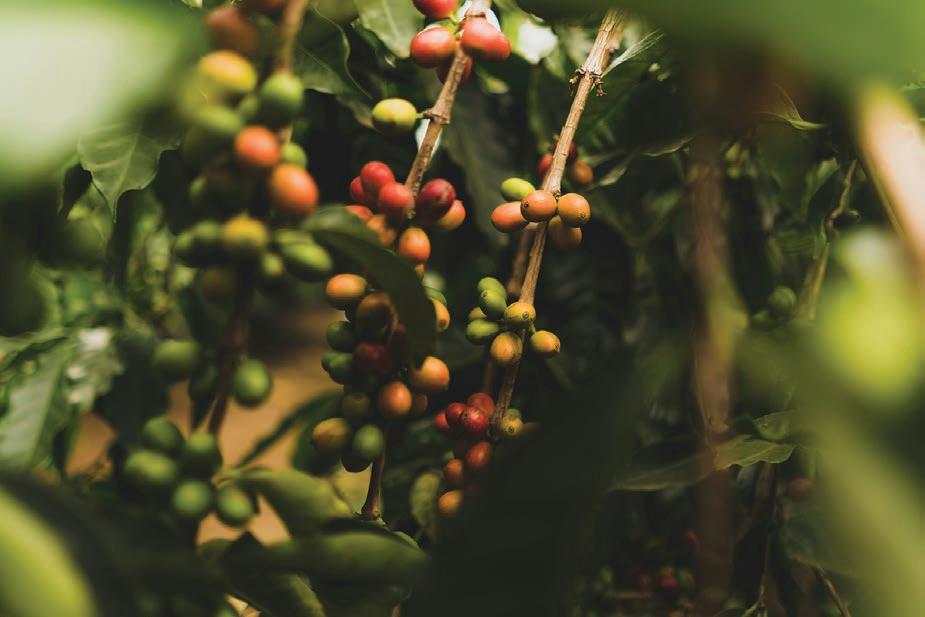
Australians have a profound love for coffee, with more than 6 billion cups consumed per year. This fact underscores not only the economic potential for domestic coffee production but also the deep-seated cultural affinity Australians have for their daily brew, setting the stage for an industry that seeks to tap into this vast and enthusiastic market.
A UNIQUE TASTE OF PLACE
The coffee bean market in Australia is worth $1 billion annually, with an established industry consisting of around 50 commercial growers located between North Queensland, south-eastern Queensland and northern New South Wales.
These growers have successfully created a distinct and high-quality product that services small domestic, tourist and specialist export markets.
As the global coffee market evolves, consumers increasingly seek unique and high-quality products that tell a story. Australian coffee fits this niche perfectly, offering distinctive flavors rooted in the country’s unique terroir.
“Producing clear flavour profiles, depending on where and how Australian coffee beans are grown, will assist coffee producers in defining and communicating the unique characteristics and flavours of their coffee.”

This terroir, or “taste of place”, distinguishes Australian beans from those grown in traditional coffee regions such as Ethiopia, Colombia, Brazil, Jamaica, Costa Rica and Vietnam. While many associate terroir with wine, Dr Olivia Reynolds, AgriFutures Australia Senior Manager of Emerging Industries, says establishing a vocabulary to discuss coffee’s terroir is important to the success of a local coffee industry.
“New research completed in conjunction with Southern Cross University, Processing Methods
Bootcamp and the Australian coffee industry has confirmed that Australian-grown coffee has unique and measurable terroir with a sweeter, more nutty and fruity flavour that coffee drinkers appreciate and enjoy,” Dr Reynolds says.
“Producing clear flavour profiles, depending on where and how Australian coffee beans are grown, will assist coffee producers in defining and communicating the unique characteristics and flavours of their coffee. Importantly, consumers can start to identify their preferences
PAGE: COFFEE FRUIT, ALSO KNOWN AS A COFFEE CHERRY, GROWS FROM THE COFFEE PLANT; AUSTRALIANS DRINK MORE THAN 6 BILLION CUPS OF COFFEE A YEAR.
THIS
READ IT ONLINE APRIL/MAY 2024 71 AGRICULTURE

“The aim of the Coffee Character Wheel is to suggest and unify the vocabulary used for describing the acidity, mouthfeel, aftertaste, and overall characteristics of coffee that are not specifically flavour.”
depending on where that coffee is produced, much in the same way as wine.”
The Coffee Character Wheel, developed through this research, plays a pivotal role in this narrative, providing a comprehensive language to articulate the complex flavours and aromas unique to Australian coffee.
“The aim of the Coffee Character Wheel is to suggest and unify the vocabulary used for describing the acidity, mouthfeel, aftertaste, and overall characteristics of coffee that are not specifically flavour,” says Dr Simon Williams, Research Fellow of Plant Science at Southern Cross University.
“It is this sort of information that will allow us to inform consumers that Australia is a sophisticated and established coffee producer with enormous potential, based on the unique characteristics of the region where that coffee is grown and produced.”
INNOVATION AT THE FOREFRONT
Australian coffee benefits from the country’s diverse climates and innovative farming techniques. These innovations not only address environmental and economic challenges but also improve the overall quality of the coffee produced. Australian coffee growers have turned to technology and sustainable farming practices to face the challenges of variable weather conditions due to climate change and the high cost of labour. Precision agriculture, water-efficient irrigation systems, organic farming practices and renewable energy sources are now common on Australian coffee farms.
This commitment to environmental stewardship is attracting consumers and businesses worldwide, eager to support sustainable and ethically produced coffee. Export markets in Asia, Europe and North America are expanding, with Australian coffee
72 AusBiz. AGRICULTURE

being celebrated for its quality, traceability and sustainable production methods.
However, climate change still poses a significant threat, with increasing temperatures and changing rainfall patterns affecting coffee growing regions. Additionally, the global coffee market is fiercely competitive, with producers from traditional coffee-growing countries vying for market share.
However, the Australian coffee community remains resilient, viewing these challenges as opportunities to innovate, adapt and thrive.
One of the growers leading the charge in Australia’s homegrown coffee movement is farmer and roaster Rebecca Zentveld. Her Byron Bay-based property produces high-quality Australian coffee, with added agritourism elements for consumer education.
“We have created a real Australian farm experience where people are welcome to step out amongst the coffee trees, taste the fruit fresh off
“Australia has a strong reputation for our clean and green food and fibre production, and coffee can have an important role in telling that story in key international export markets.”
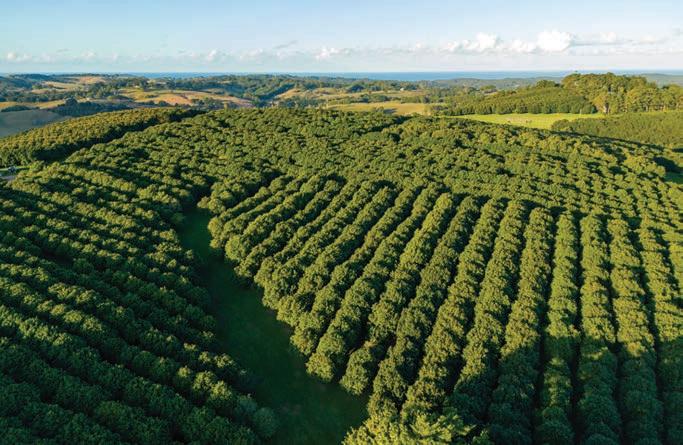
the branches, and learn about the processes coffee beans go through before we take that first sip. It teaches people to not take their daily cup for granted. And the fact that the land we’re on is so picturesque just makes the experience even more special,” says Zentveld.
THE FUTURE BREWS BRIGHT
Looking ahead, the prospects for Australia’s coffee industry are as promising as the morning aroma of a freshly brewed cup. Investments in research and development, coupled with a focus on market expansion and consumer education, are key to the industry’s growth strategy.
“We firmly believe that the Australian coffee industry can
be an absolute success story, helping to strengthen the profitability, productivity, competitiveness and sustainability of our rural industries and the regional communities who work on the land,” Dr Reynolds says.
“Australia has a strong reputation for our clean and green food and fibre production, and coffee can have an important role in telling that story in key international export markets.”
As Australia continues to carve out its niche in the global coffee landscape, the industry is growing from an emerging player to a recognised leader in specialty coffee. The Australian coffee revolution is well underway, promising a future in which Australian beans are a staple in the cups of coffee aficionados around the world.
THIS PAGE: A FRESHLY BREWED CUP OF COFFEE; A COFFEE PLANTATION OUTSIDE BYRON BAY. IMAGE: THURTELL.
APRIL/MAY 2024 73 AGRICULTURE
SAVING THE SOUTHERN PYGMY PERCH
Restoration efforts have brought this endangered fish species back from the brink of extinction.
Words: matilda meikle

74 AusBiz.
READ IT ONLINE

Flinders University has collaborated with local community groups to return the southern pygmy perch to Bendigo, Victoria. The plan to bring this endangered species back began five years ago, and is now coming to fruition.
Flinders Molecular Ecology Lab PhD and co-author of a recent research article, Sean Buckley, says that recovery is very much underway.
“Recently we heard our established population at the Cadella Way wetland has just been used to reintroduce southern pygmy perch to nearby areas where the species has been locally extinct for more than 20 years,” he says.
PRECIOUS PERCH
The southern pygmy perch is a species of small freshwater fish that used to flourish in the MurrayDarling Basin. However, they have since disappeared from many regions, including Bendigo, due to invasive species such as carp, habitat fragmentation, droughts and bushfires.
These fish are most often found in small covered habitats such as streams, billabongs and lakes, preferring still water. Growing between 65 and 85mm, they feed on small crustaceans and insects.
“Loss of wetlands and prolonged drought caused a rapid population decline, resulting in emergency watering and the rescue of wild fish to be placed in a specialised breeding program.”
THIS PAGE: THE SOUTHERN PYGMY PERCH IS A FRESHWATER FISH NATIVE TO THE MURRAY-DARLING BASIN. IMAGE: MCMA.
APRIL/MAY 2024 75 ENVIRONMENT
“One of the key roles southern pygmy perch play in their ecosystems is invertebrate control – they primarily feed on crustaceans and larval insects (like mayflies and mosquitoes), helping to control their numbers in the wild,” says Dr Buckley.
Sadly, this is not the first time that southern pygmy perch have been endangered. According to a report from the Government of South Australia, urgent action was required between 2007 and 2008 to ensure the survival of this species. Loss of wetlands and prolonged drought caused a rapid population decline, resulting in emergency watering and the rescue of wild fish to be placed in a specialised breeding program. The southern pygmy perch is listed as endangered
under the national protection act, and near threatened in the IUCN red list.
Often, small freshwater fish are particularly vulnerable to natural and human impacts due to their poor ability to disperse and tendency to remain in one particular habitat. This is compounded by the lack of legislation or management strategies that target these fish.
A VITAL COLLABORATION
In order to re-establish southern pygmy perch into the Murray-Darling Basin, a community driven project involving local government, landcare managers, fish hobbyists, an aquaculture business and Flinders University researchers was founded.
Volunteers collected fish from nearby rivers and deposited them in
an aquaculture facility in order to breed and grow numbers. Then, 600 fish were released across three wetlands.
Genetic research from the Molecular Ecology Lab at Flinders University drew on 10 years of data to identify the best process for reintroduction while maintaining genetic diversity and preventing inbreeding.
“Something we knew about pygmy perch is that they have very low genetic diversity, so this was something we particularly wanted to keep an eye on,” says Dr Buckley.
“Making sure that the population wouldn’t lose any diversity from the captive-breeding and release was essential to give them the best chance of thriving in their new home.”
Empowered by this knowledge,
“Making sure that the population wouldn’t lose any diversity from the captive-breeding and release was essential to give them the best chance of thriving in their new home.”

76 AusBiz. ENVIRONMENT

the project was able to maintain genetic diversity, with follow-up monitoring revealing that population numbers continue to increase.
The success of the project has encouraged further reintroduction of southern pygmy perch and other threatened species throughout the region.
According to Dr Buckley, “local communities are essential to projects such as these, as their intimate knowledge of the local environment – including suitable places to collect fish from and reintroduce them to – is vital as part of the program design.
“These communities also provide the critical on-the-ground work such as restoring and preparing the release sites and providing their labour for the collection, transport and breeding of the fish. Without their efforts,
we wouldn’t be able to take on a program of this scale with such strong positive outcomes.”
The report, ‘A community-driven captive-breeding and reintroduction program maintains genetic diversity in a threatened freshwater fish’, asserts that by involving local non-expert groups, scientists fostered relationships, drew on local knowledge and encouraged the use of scientific information in decisionmaking frameworks.
“Collaborative approaches to conservation management are critical to respond to the ongoing biodiversity crisis,” says the report.
By involving the community in the reintroduction program, experts imparted useful knowledge which can be utilised to continue monitoring the southern pygmy perch. Local
OPPOSITE AND ABOVE: THE SOUTHERN PYGMY PERCH GROWS BETWEEN 65 AND 85MM; SOUTHERN PYGMY PERCH BEING RELEASED. IMAGES: MIDDLE CREEK FARM AND CGB.
individuals were also able to provide input based on the conditions and resources available in their area.
Co-author of the article and MELFU lead Professor, Luciano Beheregaray, adds, “we hope that our study showcases how collaborative community efforts that include genomics might have great outcomes for conservation.
“We’re looking forward to expanding these collaborations in the future.”
APRIL/MAY 2024 77
ENVIRONMENT
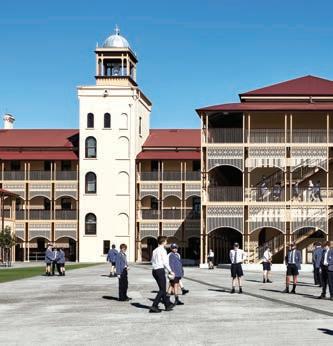
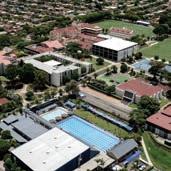





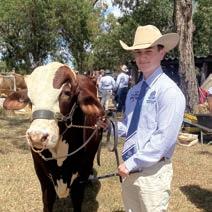
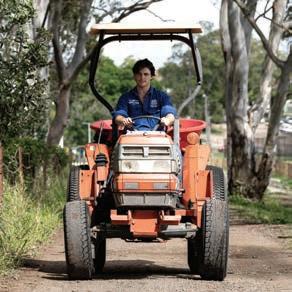









SEA SPONGES
REVEAL GLOBAL TEMPERATURE CHANGES
Scientists have found that the world is 1.7 degrees warmer, according to information gathered from the Puerto Rican sea sponge.
Words: matilda meikle
SCIENCE
READ IT ONLINE 80 AusBiz.
“If current rates of emissions continue, average global temperature will certainly pass 2 degrees by the late 2020s and be more than 2.5 degrees above pre-industrial levels by 2050.”
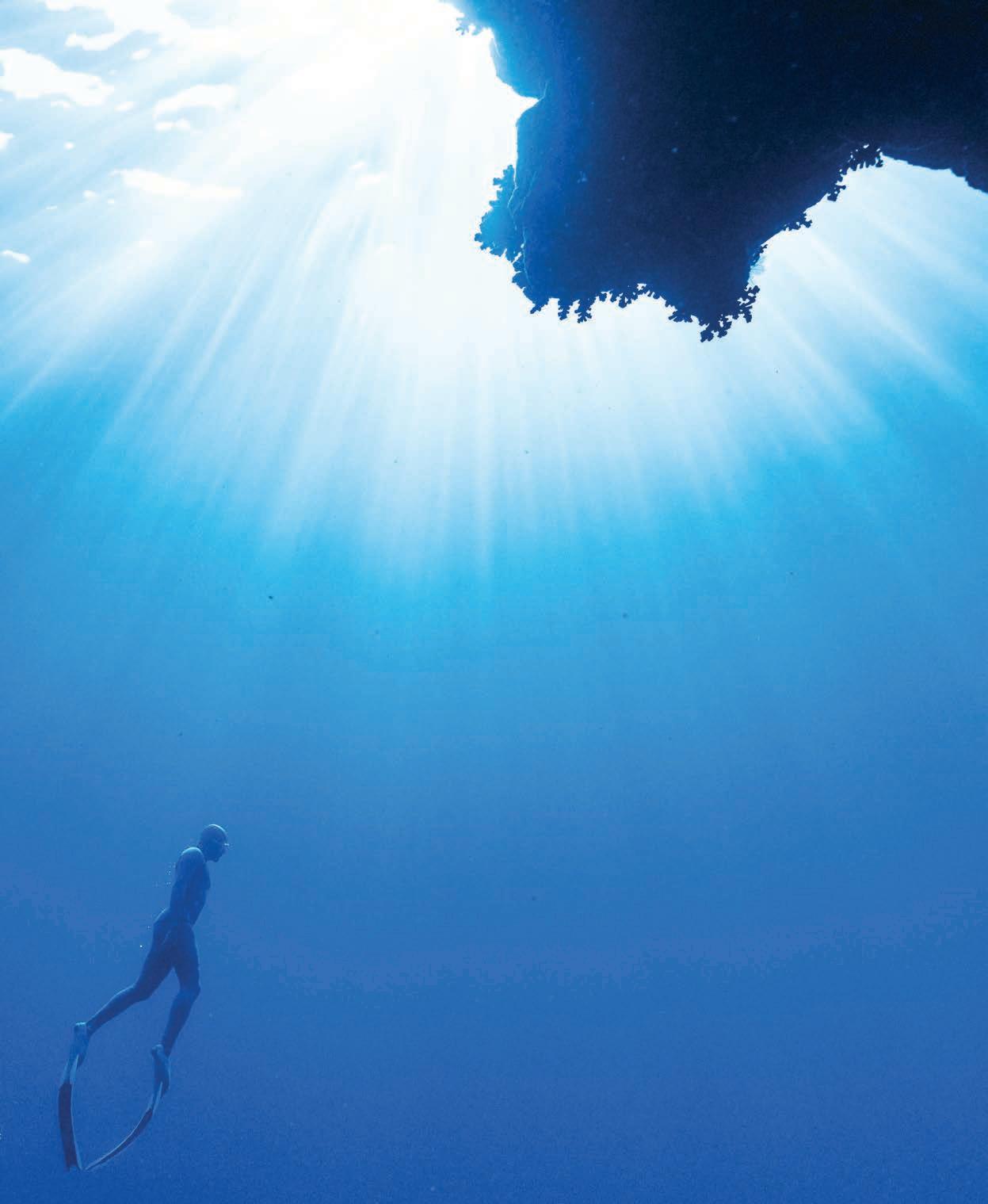
Researchers from The University of Western Australia collaborated with experts from Indiana State university and the University of Puerto Rico to analyse sea sponges in the Caribbean. They found that ocean temperatures may be 0.5 degrees warmer than previously estimated, sparking major conversations around the impacts of climate change.
A DIFFICULT TASK
In 2015, the world’s nations signed the Paris Agreement in an effort to limit global warming from reaching more than 1.5 degrees Celsius above pre-industrial levels. However, monitoring changes in the earth’s temperature has proven difficult due to the lack of information establishing temperatures before the Industrial Revolution.
This was the concern raised by scientists in a new paper published in the Nature Climate Change journal, when they set out to discover a way of measuring global temperature
levels in the 1700s.
The experts faced several challenges when collecting this data. Firstly, a series of large volcanic eruptions in the 1800s caused large-scale cooling because of ash in the atmosphere, a phenomenon not seen in recent history. Additionally, methods of recording global sea temperatures only began in the 1850s, meaning the pre-industrial period is largely unaccounted for.
SUPER SPONGES
In order to ascertain the temperature in this period, scientists turned to the Puerto Rican sea sponge, an ancient species of calcifying sponge resembling a mound of foam and usually attached to a rock. Over time, these sea sponges will grow additional layers, providing scientists with a continual record of temperature throughout their lifetime.
Experts analysed the calcium carbonate skeletons of sea sponges, which contained 300 years of ocean
SCIENCE
APRIL/MAY 2024 81

mixed-layer temperature records, finding that temperatures were much higher than previously thought.
Lead author Professor Malcom McCulloch from the University of Western Australia’s Oceans Graduate School and Oceans Institute, explains that this information reveals global warming has been underestimated by around 0.5 degrees.
“So rather than the Intergovernmental Panel on Climate Change estimate of average global temperatures having increased by 1.2 degrees by 2020, temperatures were in fact already 1.7 degrees above pre-industrial levels,” he says.
THE LARGER IMPLICATIONS
This revelation has sparked conversation in scientific circles, with many believing this calls for a recalibration of international climate efforts, while others argue that findings from one location don’t dictate the global reality.

For Professor McCulloch, this research presents more challenges to emissions targets, and emphasises the importance of prioritising clean energy.
“If current rates of emissions continue, average global temperature will certainly pass 2 degrees by the late 2020s and be more than 2.5 degrees above pre-industrial levels by 2050,” he explains.
“The now much faster rates of land-based warming also identified in the study are of additional concern, with average land temperatures expected to be about 4 degrees above pre-industrial levels by 2050.
“Keeping global warming to no more than 2 degrees is now the major challenge, making it even more urgent to halve emissions by early 2030, and certainly no later than 2040.”
SCIENCE
TOP TO BOTTOM: COLLECTING SEA SPONGE SAMPLES.
82 AusBiz.
IMAGE: CLARK SHERMAN; PUERTO RICAN SEA SPONGE. IMAGE: NOAA.
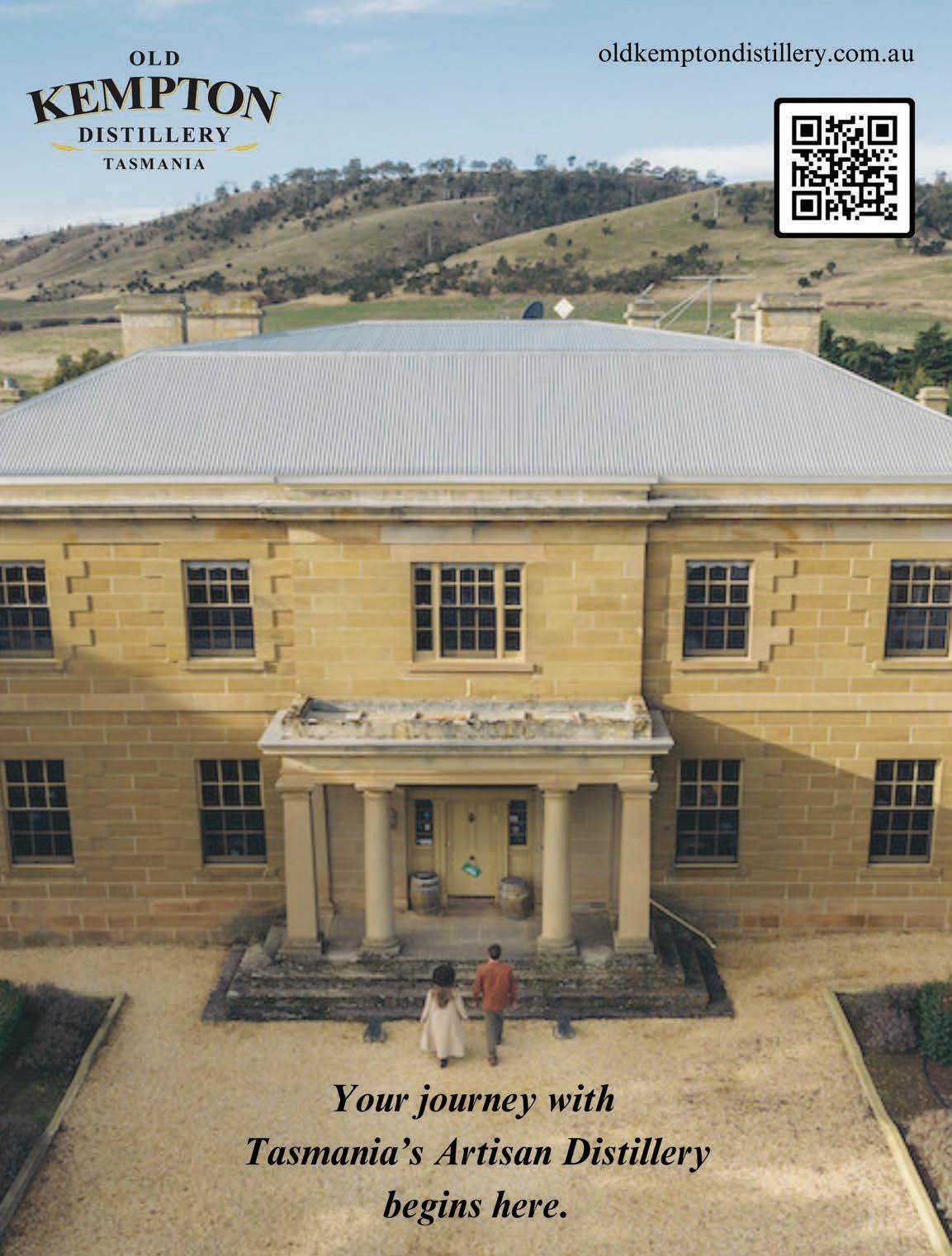

Words: Matilda Meikle
84 AusBiz.
THIS PAGE: RFRVELOX IS DESIGNED TO DETECT AND TRACK GEOHAZARDS IN REAL TIME. IMAGE: GROUNDPROBE.
INCREDIBLE
READ IT ONLINE
10
INNOVATIONS IN MINING

According to a report by the Minerals Council of Australia (MCA), Australia has invested $30 billion in research and development of the mining sector since 2005.
This has led to a series of important products that streamline mining efforts and ensure workers are protected. This list of 10 significant innovations in mining highlights the power of technology in shaping modern industries.
1 INFRA-RED THERMAL CAMERA
In 2015, Peabody Energy Australia was awarded first place at the Queensland Mining Industry Health and Safety Conference for its infra-red thermal camera. The camera was intended to reduce the risks of operating heavy machinery in small spaces or low visibility by allowing the operator to identify people in traditional blind spots.
By using heat instead of light, the camera can identify people, machines and cables even in dark environments. Heat can be detected from up to 500 metres away, allowing enough time for a driver to react before causing damage.
2 RADAR MONITORING
GroundProbe is an Australian based company that specialises in the detection of geohazards.
In 2021, it launched RFR-Velox, a reactive monitoring and alarm system designed to detect and track geohazards in real time. It was intended for use in tailings dam breaches, immediately alerting workers if a failure occurs to prevent the damage of equipment or loss of life. Users are able to closely monitor wall movement and determine the likelihood of collapse, giving them enough warning for an adequate response.
The radar was designed to adapt to any terrain or weather condition. The advanced detection capabilities, which allow the radar to detect broken ground within a 5.6-kilometre area, ensure everyone can feel safe while out in the field.
3 MINE HAULAGE VEHICLE
Rexx is a mining haul truck designed by Western Australian company Bis. Measuring only 4.8 metres wide, the truck has a tight turning
radius and can handle gradients up to 12 per cent. It can also drive along narrow haul roads to deliver loads to difficult locations. The truck can travel up to 40 kilometres fully loaded, and saves between 20 to 30 per cent of its fuel in the process, making it an economical and efficient mining vehicle.
Rexx has also been built with energy adaptability to accommodate future hybrid, electric or hydrogen platforms.
The truck is fitted with 360-degree cameras, fatigue detection and driver monitoring systems that lead to better overall safety outcomes.
4 ROBOTIC CAMERA INSPECTION DEVICE
WA-based robotics company Nexxis, launched the world’s first EX-rated robotic camera inspection device, known as Magneto-EX, in 2021. Confined spaces are one of the most dangerous terrains for mine workers, leading to a high proportion of accidents. The spider-like frame of Magneto-EX allows it to enter tight spaces and explore areas where humans cannot or should not go. The small robot is fitted with magnetic feet to allow for hazardous area inspections on mining sites, and AI technology enables the inspection of vertical structures, gathering data to report back to system operators.
5 SURVEY DRONES
Trinity Pro is a winged mapping drone designed to capture aerial data for better coverage of mining sites. Released by Quantum Systems, the drone can cover an area of 700 hectares, and fly for up to 90 minutes at one time.
Quantum has released a large selection of sensors, which can be swapped over in the drone depending on the necessary surveying applications. The drone can assist in 3D photogrammetry, distance measurements, terrain models, and more.
The drone has also been developed in order to take off and land from different locations, with a downwards facing camera to assist with terrain avoidance and safe landings.
APRIL/MAY 2024 85 MINING
6 LONGWALL AUTOMATION
According to the CSIRO, longwall mining accounts for 90 per cent of Australia’s underground coal production. Typically, a mechanical shear will cut along the coal seam, exposing miners to health and safety risks.
In response, the CSIRO has developed an underground automation system that uses remote guidance technology to steer equipment. This removes workers from direct hazards while also streamlining the process of longwall mining.
7 FLEET MANAGEMENT
Aptella, an Australian automation and positioning tech company, has developed a way for managers to keep track of their mining operations. iVolve is a fleet management system that provides a window into all site operations. It uses map-based visualisation tools to track the fleet in real time, providing the location and operational status of vehicles as well as the load each one is carrying.
The software can also be used to analyse the history of the fleet, including movements, operator lists and transported materials.
8 SAFETYSPEAR
One of the biggest hazards in underground mining is injury as a result of falling objects. In response, RattleJack developed the SafetySpear, a solution to stop falling drill rods from causing serious incidents. The SafetySpear works by
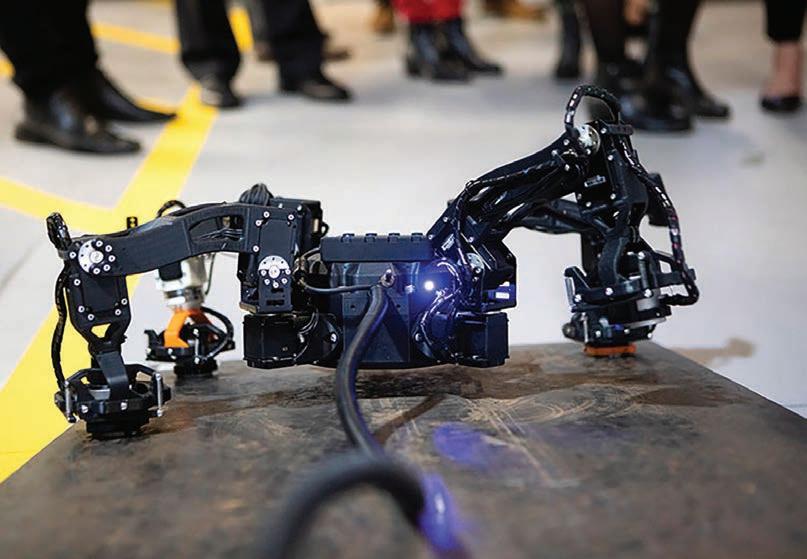
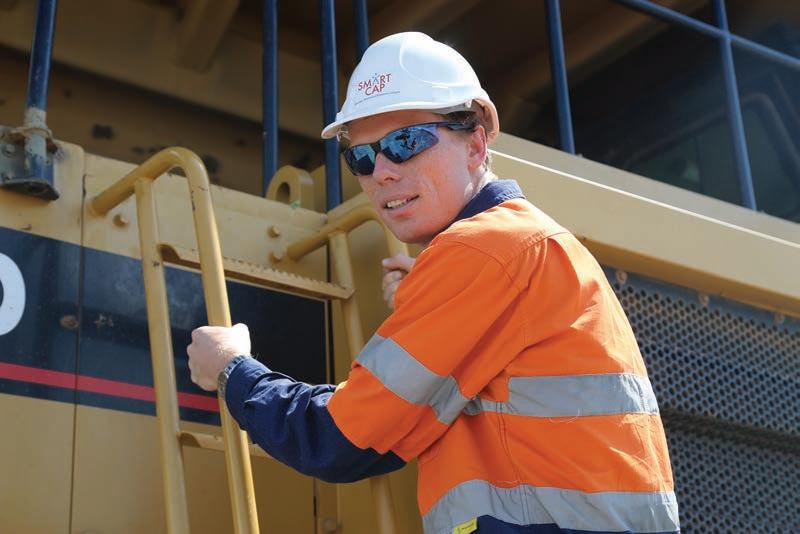
plugging drilling blast holes with a lightweight, high-impact material. It activates when hit with any downwards force, protecting workers from falling hazards.
The SafetySpear can be installed by one individual within minutes, making it an economic solution as well. The multi-stage design allows it to continue expanding during use, ensuring complete protection.
9 CAVE TRACKER
Cave Tracker is a real-time measurement of the movement of fragmented rocks developed by Mining3, Newcrest Mining, Rio Tinto and Elexon. It works using magnetic beacons inserted into a body of ore and spun at a certain speed to create a magnetic field.
This field, which mitigates the need for battery power, can be detected
86 AusBiz. MINING
CLOCKWISE FROM LEFT: MAGNETO-EX. IMAGE: NEXXIS; LIFEBAND BY SMARTCAP; LONGWALL MINING. IMAGE: CSIRO.

from more than 200 metres away, picked up by detectors which can then determine the 3D location of a cave in real time. This enables mining workers to pinpoint which parts of a cave are moving and which parts are stagnant.
10 FATIGUE MONITOR
LifeBand is a fatigue monitoring system developed by SmartCap. It can be integrated into headwear such as caps, hard hats, or even headbands, making it an easy tool to operate.
The device is connected to the Life App, which provides users with visual and audible alerts when they become fatigued.
The system works by measuring brain activity and determining a user’s level of alertness. The program then offers real-time feedback and alerts to keep the individual safe.

Our civil and structural engineering team is experiencing significant growth. We’re expanding our regional operations with a brand new office opening in Brisbane in 2024. We’re also seeking talented civil engineers to join our thriving Darwin team.
Become an integral part of our dedicated team, leading the projects that will shape the future Australia.
• Work on diverse projects across multiple sectors
• Be a part of our supportive team culture
• Build your future in a thriving region

APRIL/MAY 2024 87 MINING
r
ROBOTS WITH A HUMAN TOUCH

In the rapidly evolving landscape of robotics, an Australian start-up is making waves with its groundbreaking approach to robotic perception and dexterity.
Words: Muhammad Hassan Aamir
TECHNOLOGY
READ IT ONLINE 88 AusBiz.
Contactile has taken on the challenge of bridging the gap between the mechanical and the tactile, striving to endow robots with a ‘human’ sense of touch. This technology is not just an advancement; it’s a leap towards the future of automation and robotics.
THE DILEMMA AT HAND
The difficulty in creating a ‘human’ sense of touch in robots lies in replicating our dexterity and fine motor skills. Robots may have advantages when it comes to efficiency, but humans understand that grasping and grabbing objects requires different grips and uses of force – something a robot lacks.
Contactile hopes to change this.
At the heart of the company’s innovation is the development of advanced robotic grippers capable of sensing and adapting to the physical properties of the objects they handle. Unlike traditional robots, which rely on pre-programmed pressure and grip
THIS PAGE: CONTACTILE
CO-FOUNDERS
(L-R): STEPHEN REDMOND, HEBA KHAMIS AND BENJAMIN XIA. IMAGE: CONTACTILE.
patterns, Contactile’s robots can adjust their grip in real-time, based on the feedback received from tactile sensors.
This mimics the human ability to gauge the texture, weight and slipperiness of objects, ensuring a gentle yet firm grip that can handle a wide variety of materials without causing damage.
The company’s founders, drawn together by their shared passion for robotics and artificial intelligence, have leveraged their expertise in mechanical engineering, machine learning and sensor technology to achieve this feat. By combining optical sensors with advanced algorithms, they have created a system that can learn and improve over time, enhancing its ability to understand and predict the physical characteristics of objects.
A ROBOTIC FUTURE
What sets Contactile apart is not just its technological prowess, but the vision that drives its innovation. The
founders’ mission and values clearly align with what they seek to achieve with respect to robot dexterity. As stated on the company’s website, “our mission is to give robots a human sense of touch so that they can use their hands with extraordinary dexterity just as we (humans) do.”
As Contactile co-founder Heba Khamis says, “the inspiration for developing artificial tactile sensors came from studying the human sense of touch in a multidisciplinary research project. The holy grail of general purpose robotics is to replicate human dexterity, and humans rely heavily on their sense of touch during object manipulation.
“So, we took inspiration from nature and developed an artificial tactile sensor with features that mimic the biomechanics of the human fingertip. Contactile is all about giving robots a human sense of touch to enable robotic dexterity. Our artificial sensors can measure the same tactile parameters that humans rely on for our dexterity.”
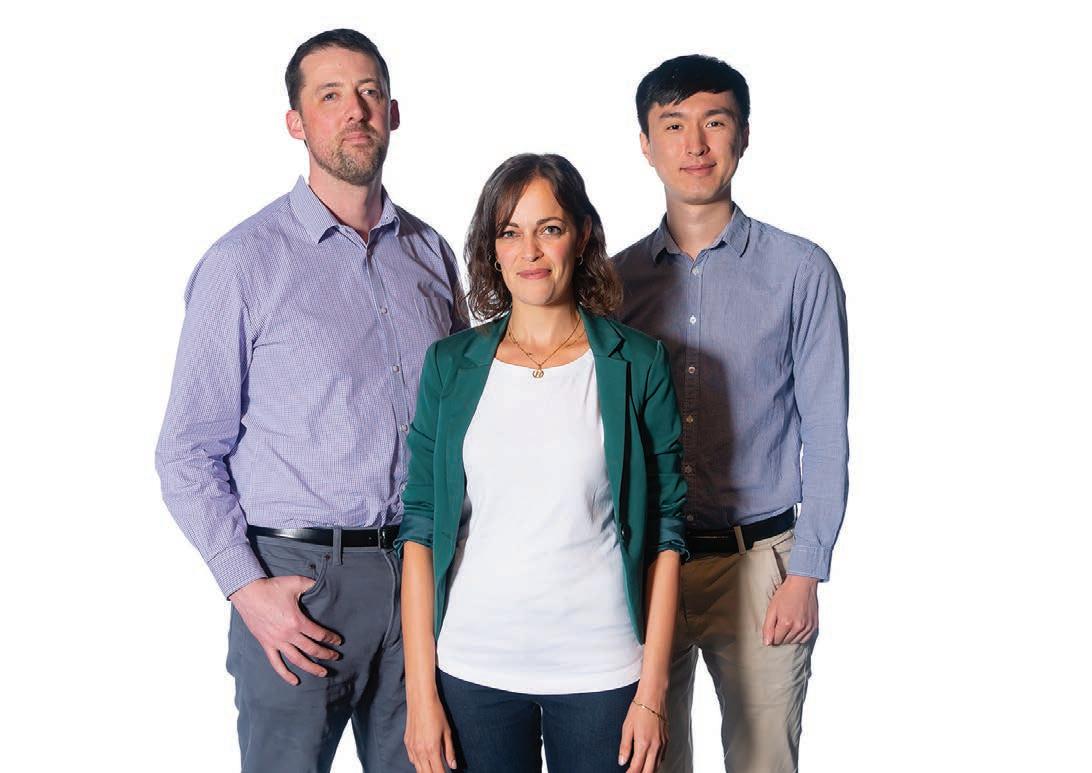
Contactile’s technology promises to make robots more versatile, efficient and, crucially, safer to work alongside humans. This is particularly relevant in industries such as manufacturing, warehousing and healthcare, where precision and delicacy are often required. This adaptive grip technology has the potential to revolutionise the way robots are utilised across various sectors.
IMPLICATIONS AND APPLICATIONS OF CONTACTILE
According to Khamis, there are far-reaching applications of Contactile. She says, “while current robotics are really versatile, once programmed, they are pretty much constrained to perform a particular task over and over again. We typically see robots being used in high-volume
TECHNOLOGY
APRIL/MAY 2024 89


manufacturing where they perform highly repetitive tasks with little or no variability.
“Our tactile sensor and autonomous gripping technology would have tremendous value in automating tasks that have a high degree of variability or where the robotic system is required to perform multiple potentially unrelated manipulation tasks.
“Some examples are fulfilling grocery orders which contain highly variable product mixes including fresh produce, packaged goods and fridge and freezer items, autonomous maintenance in remote areas where the robot might be required to handle and manipulate parts that could be in any state – imagine turning a gas valve when it has rusted. The implications
“Our mission is to give robots a human sense of touch so that they can use their hands with extraordinary dexterity just as we (humans) do.”
of this technology are extremely far-reaching!”
In manufacturing, robots equipped with Contactile’s grippers could handle delicate components with greater precision, reducing waste and improving product quality. In healthcare, robotic assistants could perform tasks such as administering injections or handling fragile equipment, improving patient care and freeing up human staff for more complex duties.
Beyond its immediate applications, Contactile’s work represents a significant step forward in the quest for robots that can truly interact with the physical world in a human-like manner. As robots become more integrated into our daily lives, the
ability to handle objects with care and precision will be crucial in ensuring they can be trusted to perform a wide range of tasks safely and effectively.
The journey of Contactile is a testament to the power of innovation and the potential of robotics to enhance our world. As the company continues to refine and expand its technology, the future of robotics looks increasingly human – not in appearance, but in touch, sensitivity and adaptability.
In bringing the human sense of touch to robots, Contactile is not just advancing technology; it is redefining the boundaries of what robots can do and opening up new possibilities for human-robot collaboration.
TECHNOLOGY
ABOVE AND BELOW: THE CONTACTILE ALL GRIPPERS; PAPILLARRAY TACTILE SENSOR DEVELOPMENT KIT. IMAGE: CONTACTILE. 90 AusBiz.
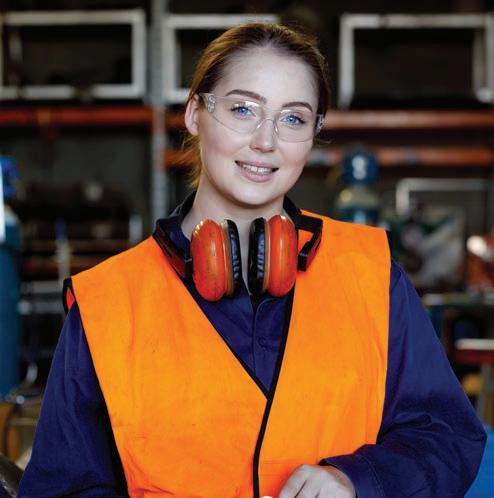



CONTACT: E: publisher@trulyaus.com W: ausbizmedia.com P: 0425 325 202 @ausbizmedia@ausbizmedia TECHNOLOGY MINING AGRICULTURE FINANCE PROPERTY ENVIRONMENT BUSINESS CHARITY WE CREATE STORIES THAT MATTER TALK TO US ABOUT HOW WE CAN SHARE YOURS The home of real Australian business stories
THREE AMAZING AUSSIE CHARITIES HELPING ONE PERSON AT A TIME
Australia is a country always seeking to make a difference, as seen in the abundance of impactful charities operating year-round.
But sometimes, choosing the right organisation to support can be difficult. That’s why we are placing the spotlight on three incredible charities helping those in need in unique and inspiring ways.
SUPPORT THE GIRLS
Support the Girls is a not-for-profit organisation providing vulnerable women with professionally fitted bras and hygiene products.
For many women and girls in Australia, a lack of access to these essential items results in mental and physical health issues. Support the Girls seeks to empower these individuals and build their selfesteem so they can feel confident in their community.
Primarily, the organisation runs bra gifting events, where disadvantaged women and girls are invited to a communal safe space and given bras, underwear and toiletries. At these events, they are also provided with morning tea baked by the volunteers. The aim of the program is to create social connection, building a place of support and contact for often socially isolated individuals while fitting them with essential hygiene products.
Support the Girls also partners with BreastScreen NSW to provide free mammogram screenings, and travels to marginalised women living in regional, remote or Indigenous communities to offer the same services.
The organisation was founded in 2016 by former crisis counsellor Jane Holmes, and continues to help countless individuals in Queensland and New South Wales.
FARESHARE
FareShare is Australia’s largest non-profit kitchen, cooking nutritious meals for those doing it tough.
Volunteers use rescued, donated and home-grown food to create delicious meals which are then given to frontline charities including homeless shelters, disaster relief groups, First Nations organisations and women’s refuges. In 2023 alone, FareShare’s Melbourne kitchen cooked 60,000 single-serve meals for those in need.
FareShare operates several refrigerated vans throughout Victoria, which collect surplus and donated food from supermarkets and farmers. These ingredients are then brought back to the kitchens in Melbourne or Brisbane. Last year, the vans managed to rescue 1,500 tonnes of food. For even more produce, the organisation owns three kitchen gardens, which grow more than 100 tonnes of vegetables every year.

92 AusBiz.
DONATE HERE DONATE HERE
Words: Matilda Meikle
CHARITY READ IT ONLINE
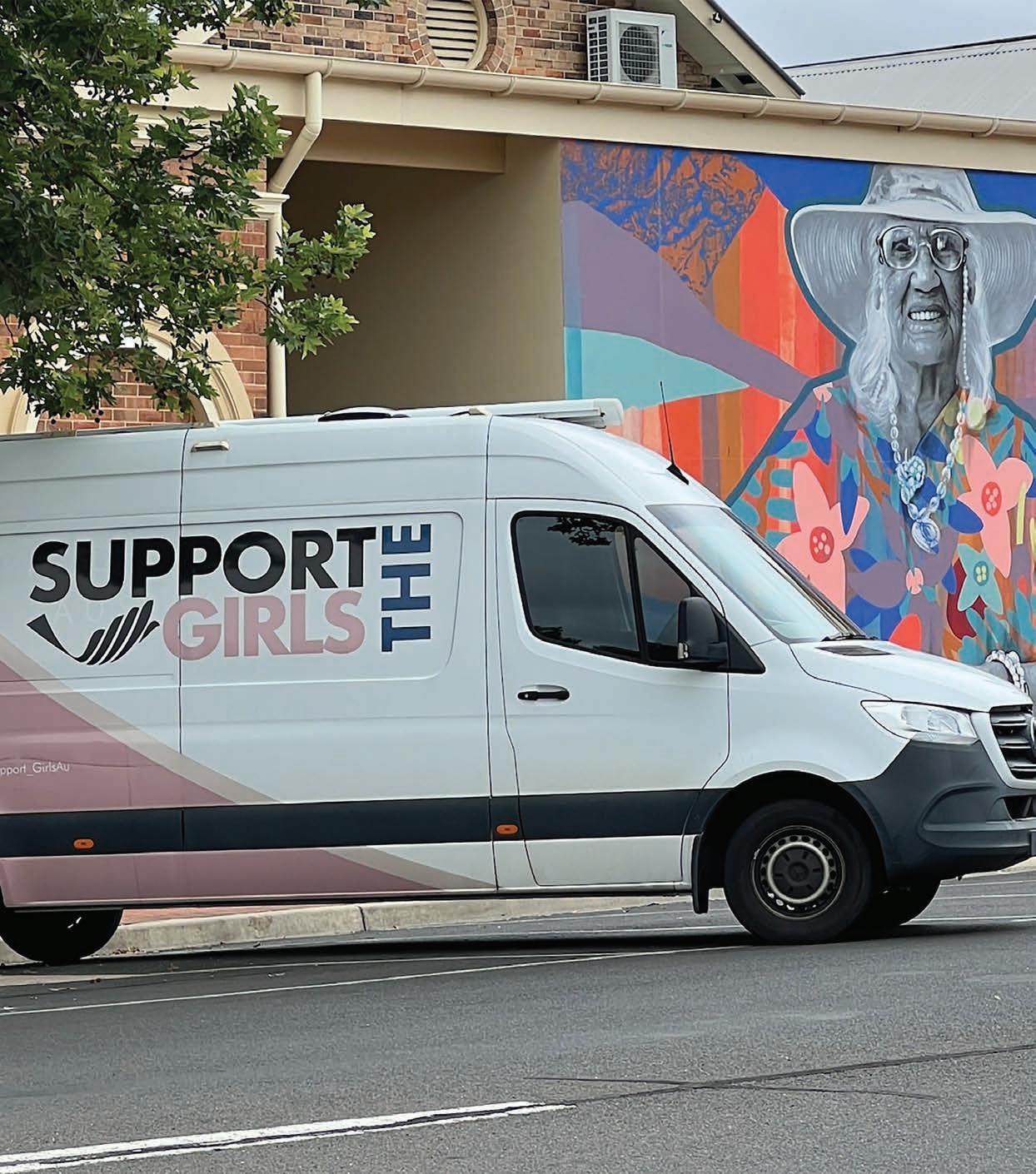
THIS PAGE: SUPPORT THE GIRLS PROVIDES VULNERABLE WOMEN WITH BRAS, UNDERWEAR AND TOILETRIES, AS WELL AS FREE MAMMOGRAM SCREENINGS.
IMAGE: SUPPORT THE GIRLS.
APRIL/MAY 2024 93 CHARITY


The Schools in the Kitchen Program provides schoolchildren with the chance to learn about the struggle of food insecurity and take action. During the excursion, students are taught to prepare, measure and pack meals in the FareShare kitchens, helping them to make a lasting difference to their community. Corporate groups are also encouraged to volunteer in Melbourne.
HOMIE
HoMie is a Melbournebased clothing brand that contributes 100 per cent of its profits towards its social impact programs for young people in need. The flagship store can be found on Brunswick Street in Fitzroy, where branded clothes are sold to contribute to the HoMie programs.
HoMie Pathway Alliance is a retail
CLOCKWISE FROM TOP LEFT: HOMIE SUPPORTS YOUNG PEOPLE IN NEED.
IMAGE: HOMIE; SUPPORT THE GIRLS BRA GIVEAWAY; CHEF PAULA WITH PRODUCTION MANAGER JAMES FIEN IN THE MORNINGSIDE KITCHEN. IMAGE: SUPPLIED.

education and employment program that aims to support young people between the ages of 18 and 25 who are impacted by homelessness and need help finding meaningful employment. The young people are paid to study a Cert III in business while simultaneously completing professional development classes. Participants are also employed part-time at the HoMie store or an employer partner during the program. Ninety per cent of Pathway Alliance graduates remain employed after the program.
Similarly, HoMie’s VIP Days encourage young people to visit the store and receive free garments, haircuts, personal care packs and lunch during particular session times.
Since its foundation, HoMie has donated over 12,000 items of brandnew clothing to those in need. Once a year, it also travels to regional and remote communities to offer the same services in the form of a VIP Pack, which includes clothing and other supplies.
94 AusBiz. CHARITY
DONATE HERE

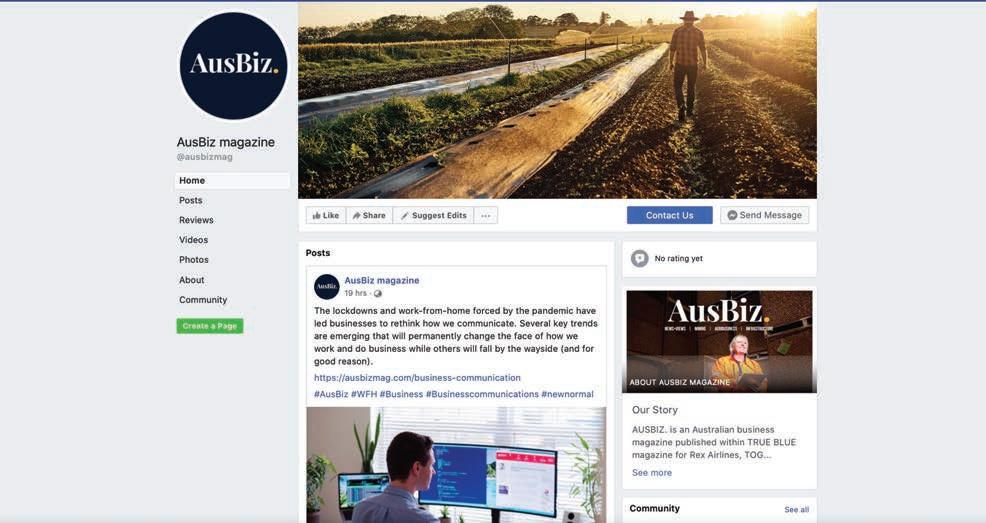



@AUSBIZMEDIA
ausbizmedia
AUSBIZMEDIA @ausbizmedia /AUSBIZMEDIA
ausbizmedia
Frog ID HITS AN IMPORTANT RESEARCH MILESTONE
Words: Matilda Meikle
FrogID, a volunteer citizen science platform, has now recorded one million frogs.
The app, established back in 2017, is responsible for recording and identifying frog species from around the country. This provides an excellent database for scientists and policy makers when implementing conservation programs and researching ecosystems.
Kim McKay AO, app creator and Australian Museum Director & CEO, says that the success of FrogID comes from more than 45,000 volunteer citizen scientists recording their sightings all across Australia.
“Emphasising science and technology, the free FrogID app is at the heart of our nation-wide program. The GPS technology used in FrogID has allowed thousands of Australians of all ages to contribute to this vital national citizen science project,” McKay says.
A MAJOR ACHIEVEMENT
FrogID is a project run by the Australian Museum, and the largest global citizen science project focusing on frogs in the world.
Earlier this year, the one millionth frog – a Spalding’s rocket frog – was recorded by Dr Elliot Leach around 50 kilometres from Cloncurry in northwest Queensland.
According to Dr Jodi Rowley, Curator of Amphibian and Reptile Conservation Biology at UNSW and lead scientist for FrogID, “there are few recordings of this species in Queensland. It only calls during the wet season from Litchfield National Park in the north-west of the Northern Territory to far north-west Queensland near the Gulf of Carpentaria. Elliot Leach’s submission is also the first FrogID submission from the area,
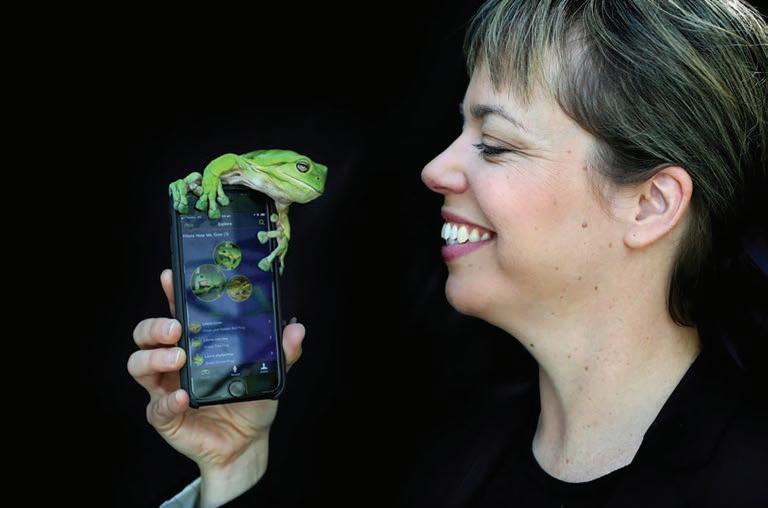
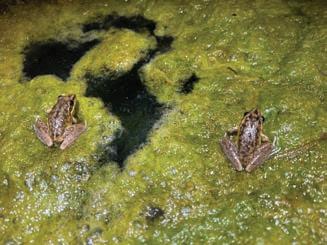
effectively increasing FrogID’s spatial coverage to 36.5 per cent of continental Australia.”
AMAZING AMPHIBIANS
Frogs are vital for maintaining healthy ecosystems.
“Because frogs are highly sensitive to environmental change, including pollution, land and water use, and climate change, they are key indicators of the health of our environment,” says Director and Chief Scientist of the Australian Museum Research Institute, Professor Kris Helgen. “With 249 native frog species in Australia including many in serious
decline, there is a critical need to better understand our frogs and their habitats.” It is vital that scientists continue to monitor these amphibians. Frogs absorb oxygen through their skin, making them susceptible to pesticides, herbicides and skin conditions. Additionally, habitat loss is resulting in declining numbers. Now, more than ever, recording frogs is an essential step in understanding the impacts of climate change and human interaction on the environment.
Amazingly, FrogID has also led to the successful identification of seven new species, and produced more than 20 research papers. In 2021 alone, the app led to the discovery of Spalding’s rocket frog, screaming tree frog and robust bleating tree frog.
To join FrogID, simply download the free phone app and press record any time you hear a frog. The audio file is submitted to a group of experts, who can then identify and locate frogs across Australia.
APRIL/MAY 2024 96 LAST WORD
READ IT ONLINE
THIS PAGE: DR JODI RAWLEY. IMAGE: JAMES ALCOCK; SPALDING'S ROCKET FROG. IMAGE: ELLIOT LEACH.
Destination: Freedom
Get off the FIFO treadmill and create a life you love with a Kleenit franchise, a trusted Australian brand operating since 1987. Use your trade skills to deliver commercial maintenance services closer to home and choose the hours that suit you.


PROFITABLE FRANCHISE OPPORTUNITIES
It’s time to build a family legacy with uncapped earning potential. We seek those with proven trade skills, dedication and a can-do attitude. Begin with a start-up investment of $60,000.
Operational and skills training provided, online and in-person
Opportunities across Australian capitals and regional areas
Support through Head Office and our national franchisee network
Use your ute or claim a new one with attractive tax incentives
Download our franchise info pack to learn more
1800 255 336
www.kleenit.com.au

Pressure Cleaning | Floor Coating | Line Marking | Graffiti Removal | Emergency Cleanup | Asset Maintenance
Quality ISO 9001 OHS ISO 45001 Environment ISO 14001






























































































































































































































































































































